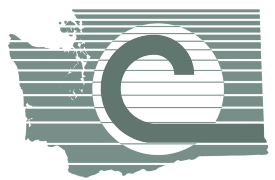As conservation districts seek additional funding to continue their strong track record of improving and restoring riparian habitat, WACD suggests that districts send their requests to their legislators. As a starting point, WACD offers the language suggested below.
Dear [name of legislator]:
As you grapple with the pressing legislative issues of this session, we ask that you do not forget the need for increasing riparian project funding for Washington’s conservation districts. We are the people and organizations that handle tough natural resource issues by bringing people together through a voluntary process to find solutions. Many conservation districts are responsible for administering the Voluntary Stewardship Program at the county level, demonstrating a track record of balancing the needs of agriculture with protecting critical areas by taking a targeted approach to address the challenges facing our local communities.
We believe conservation districts have built a solid record of success in implementing funding for salmon recovery programs. Not only have districts and the Washington State Conservation Commission implemented successful federal riparian habitat programs like the Conservation Reserve Enhancement Program (CREP) for many years, but districts have also allocated more than $8 million of the $10 million granted to the Commission in the FY23 supplemental capital budget for riparian buffer restoration work.
The established collaborative approach between conservation districts, state agencies, and other partners through the Conservation Commission ensures that any approach reflects both local and state perspectives in any salmon recovery effort. This unique approach has led to flexibility for those working to implement on-the-ground projects while naturally incorporating other natural resource partners into statewide planning processes.
We believe the successes of our conservation district community are what led Governor Inslee to propose $100 million be allocated to the Conservation Commission for salmon recovery efforts in his proposed capital budget. Related to this is a new riparian recovery program (HB 1720) advanced out of the House Agricultural and Natural Resources Committee that would be housed within the Commission.
As the natural resource component of the state budget is developed, we hope conservation districts can continue to secure your support for putting conservation on the ground. The issue of salmon recovery and providing suitable habitat through the restoration of riparian landscapes is a concern for many Washingtonians. Conservation districts are rising to the occasion and thus far have been able to meet the needs of a growing number of landowners located along various waterways. The individuals who need technical assistance and financial cost-sharing to implement the necessary restoration effort look to conservation districts for help, and we are asking for additional assistance through the state budget in meeting this need.
